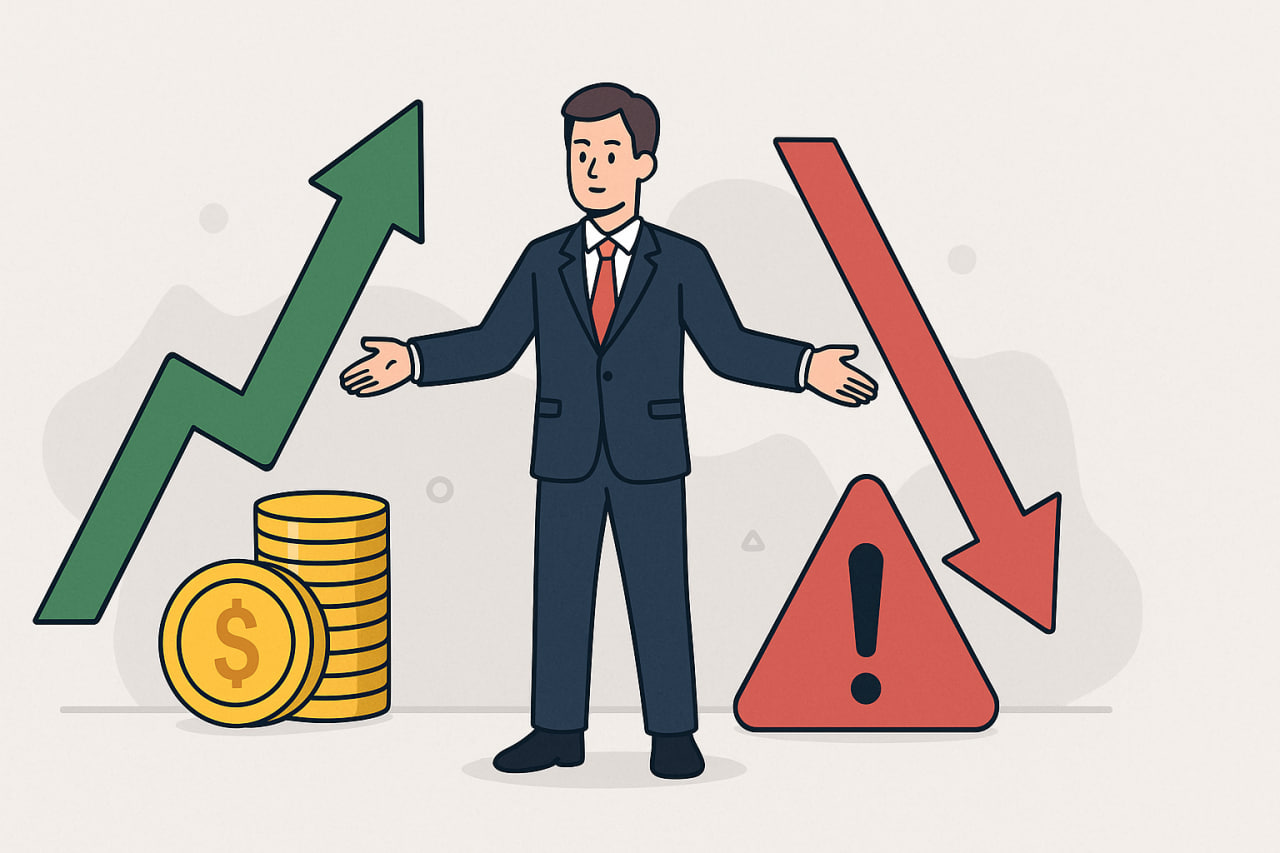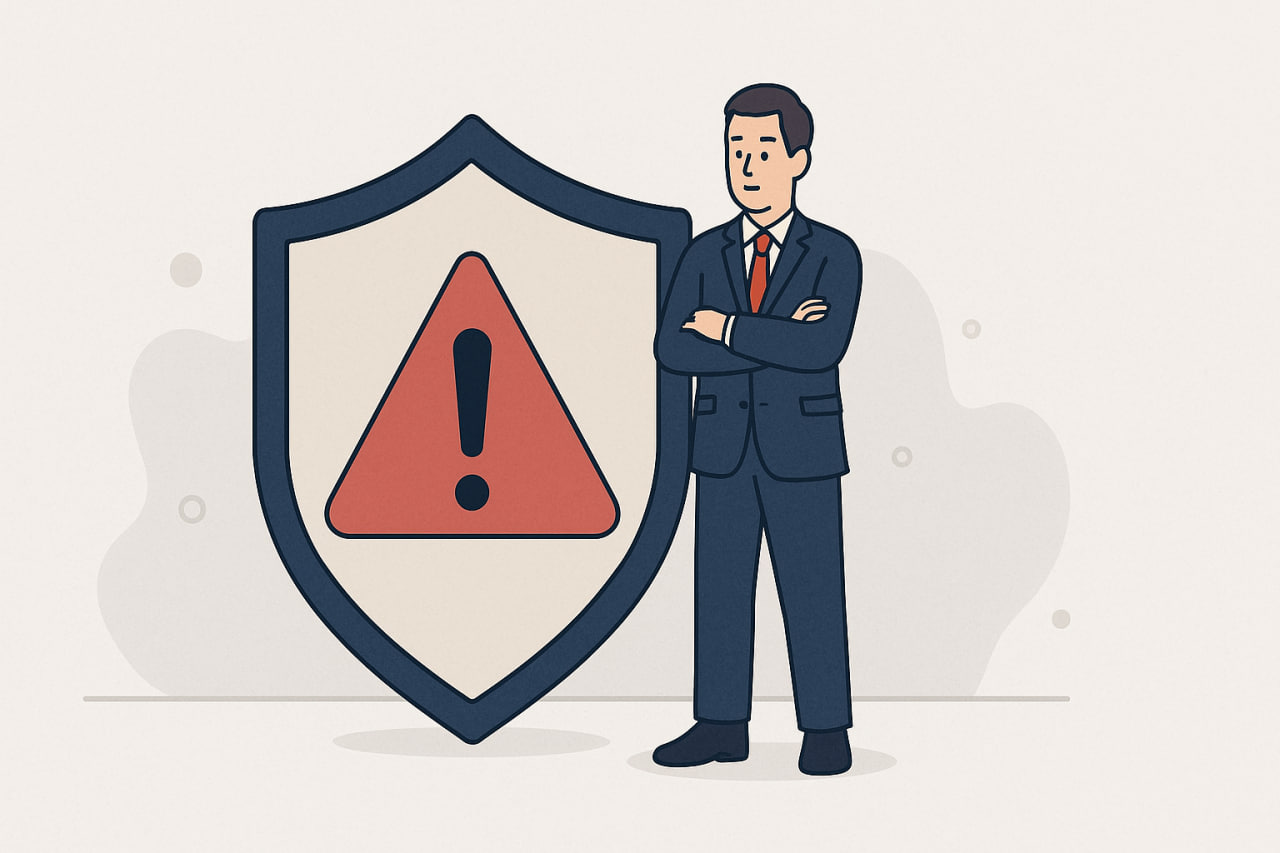Why Smart Traders Build Systems Around Risk, Not Just Profits

Contents
- Introduction
- Profit and Risk: Two Sides of Trading
- Risk Management as the Foundation of a Long-Term Strategy
- Trader Psychology and Discipline
- Conclusion
Introduction
Many traders strive to increase their capital rapidly. At first glance, this seems like a logical goal, but the market often responds with sharp pullbacks. As shown by exchange statistics, a single unsuccessful trade can significantly reduce overall performance even after a series of successful entries. Resilience in trading typically develops when the focus shifts toward effective risk management and control.
For cryptocurrencies, this is especially relevant: volatility is higher, news breaks more frequently, and emotional pressure on the trader is significantly stronger. Therefore, experienced market participants are gradually moving from the approach of “how to earn more” to the model of “how to preserve capital.” Risk management becomes the foundation of systematic strategies, enabling more stable performance.
Profit and Risk: Two Sides of Trading

Profit brings positive emotions, but risk is what prevents traders from making critical mistakes.
Often, when attention is focused only on profit, the following mistakes occur:
-
Entering a trade too late
-
Using excessive leverage
-
Opening an excessive number of positions
Risk control, on the contrary, helps preserve capital. In professional trading, the boundaries of potential losses are defined first, and only then are the entry point and profit target chosen. This sequence increases the probability of long-term stability.
The Danger of Focusing Only on Profit
Exclusive focus on trade results leads to typical mistakes:
-
Moving a stop order to a more risky level
-
Averaging down a position without a pre-defined plan
-
A series of rapid entries aimed at compensating for losses
Such actions often lead to deep drawdowns. According to exchange analytics, the absence of a risk control system is most often the reason beginners lose their entire accounts.
Experienced participants use a more structured approach:
-
Fixed risk per trade
-
Daily loss limit
-
Taking breaks when concentration decreases
In crypto trading, the standard rule is: risk in a single trade should not exceed 1–2% of the account balance; leverage should be used only with a clear plan; and the minimum risk-to-reward ratio should be set at no less than 1:2.
Risk-Adjusted Returns
Absolute returns without considering drawdowns say little about the reliability of a strategy. Two systems with the same final return may differ significantly in stability.
Profit | Maximum Drawdown | Reliability Assessment |
+10% | −2% | High quality: profit achieved with low risk |
+10% | −25% | Low quality: high drawdown threatens the result |
The essence of the approach:
-
The smaller the drawdown with the same profit, the higher the reliability of the strategy.
-
Evaluation is carried out not by a single trade but by a series of trades.
-
The key factor is the average risk/reward ratio.
Practice shows that even with 50% losing trades, an account can still grow if the strategy maintains a risk/reward ratio of at least 1:2.
To properly evaluate such indicators, it is essential not only to calculate them but also to have verified data. For this, traders use performance-tracking tools that record real trades and automatically display key metrics: drawdowns, returns, and strategy stability. This helps avoid self-deception and builds risk management on facts rather than approximate estimates.
Risk Management as the Foundation of a Long-Term Strategy

Trading is rarely built solely around seeking profit. The primary foundation is capital protection. According to trader community surveys, most successful participants consider preserving the account more important than predicting market movement. A preserved deposit offers the opportunity to implement a long-term strategy.
Money Management Rules
Position size has a key impact on results. When a trader knows exactly how much capital they are willing to risk, the likelihood of critical losses decreases.
-
Do not risk more than 1–2% of capital in a single trade
-
Use stop orders set in advance
-
Reassess position size when the account balance changes
Even during a series of losing trades, these steps help preserve funds and continue trading.
Risk/Reward Ratio
Every trade should have a clear plan in place. Example:
-
Risk 1%, profit target 2–3%
-
If the ratio is not achieved, the trade is not opened
This approach allows capital growth even with a relatively low percentage of successful trades.
Diversification and Hedging
Risks are significantly reduced when capital is diversified across various assets. In the crypto sector, this is particularly important due to high volatility.
Approximate structure:
-
Allocation across different cryptocurrencies
-
Part in more stable assets
-
Part in protective instruments, including stablecoins
Thus, the likelihood of complete capital drawdown decreases, and the strategy becomes more resilient.
Practical Examples of Risk-Oriented Systems
Experienced traders demonstrate several approaches that help maintain a balance between profitability and safety:
-
Limiting risk per trade to 1–2% of the account
-
Using stop orders at pre-calculated levels
-
Checking the risk/reward ratio before entering the market
-
Diversification across several assets
Such systems can withstand prolonged periods of instability and remain applicable even in the face of strong market fluctuations.
Trader Psychology and Discipline

Psychological pressure often leads to mistakes. Greed prompts traders to open unnecessary positions, while fear prevents them from closing losing ones promptly. Shifting focus to risk control creates a more rational action plan.
Discipline then becomes the key factor:
-
Follow established rules
-
Do not increase risk after a series of losses
-
Take breaks when concentration decreases
-
Maintain rationality under any market conditions
Psychological resilience and discipline, combined with risk management, allow traders to apply strategies consistently without succumbing to market impulses.
Conclusion
Research indicates that resilience in trading is developed not through the short-term pursuit of results, but through systematic risk management. Capital protection becomes more critical than seeking maximum profit because it enables traders to remain in the market for an extended period.
This approach ensures risk-adjusted returns and makes strategies more predictable. In the corporate environment, this principle is often regarded as fundamental: capital stability and protection become the priority, while capital growth is the consequence of proper management.